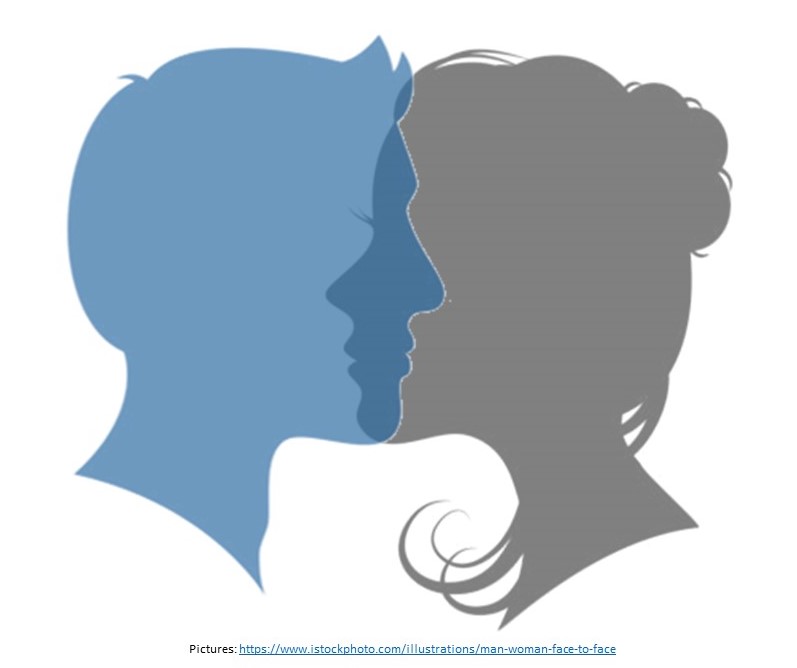Most people are passionate about something and while it is quite usual to find fan clubs around the world with interests such as football teams, vintage cars, favourite writers, or cult-like films (think Star Wars and Star Trek), some people take their passions to another level.
Some clubs or groups are so secret that no-one knows what they are about or if they really exist(ed), like the notorious Bohemian club, allegedly consisting of highflying decision-makers dating back to 1872. But then there are also funny, flamboyantly strange, dangerous, plain weird, and even accidental clubs that exist(ed).
10 The Luxuriant Flowing Hair Club for Scientists
Marc Abrahams, used to compile the Annals of Improbable Research (AIR), a satirical science journal overseeing the annual Ig Nobel Prizes (awards for improbable research) at Harvard Business School. He also ran the Luxuriant Flowing Hair Club for Scientists (LFHCfS). The latter originated from a dream his wife, Robin, a psychologist and researcher, had in 2001. In it, she had to edit a special edition of a prestigious psychology journal in which every article had to somehow mention the luxuriant flowing hair of Steven Pinker. Pinker was a Harvard professor, as famous for his head-full of grey curls, as for his work in cognitive psychology and linguistics. Marc mentioned the dream in a newsletter and photos of scientists picturing their own incredible hair, started streaming in. He posted the photos on the AIR Web site, usually accompanied by an in-depth account of the scientist’s hair history – and so the LFHCfS was born.
Although an online post of a new member dated May 2022 was found under construction and that the LFHCfS “is getting a shampoo and set while moving web hosts”. Had it existed back then, Albert Einstein’s mane would definitively have made the cut.
9 The Order of the Occult Hand
In 1965, Joseph Flanders, a Charlotte News reporter, got a bit carried away when reporting about a shooting incident, writing “It was as if an occult hand had reached down from above and moved the players like pawns upon some giant chessboard.” After a few rounds in a local bar, Flanders’ journo friends joked about his wonderful ‘purple’ prose and decided to try and sneak variations of the phrase into their published work. The inside joke spread, and other journalists joined in and within the next decade the phrase – partly or fully – found its way into multiple publications. It was only when digitalization came along that the secret of the Order of the Occult Hand was exposed in detail by Chicago Tribune staff writer, James Janega, in 2004.
The phrase had been used at least 40 times over the years – with some journalists, like Pulitzer winner Paul Greenberg (at least six-times) getting away with it more than once. With the secret out, rumours are that other phrases were proposed. We will probably have to wait for another occult hand to reveal the new mystery phrase.
8 The UK Roundabout Appreciation Society
“No place in the world exerts such attractive power as an island.” This Robert Louis Stevenson quote welcomes one to the Roundabouts of Britain website – home to the UK Roundabout Appreciation Society (UKRAS). Appropriately, Kevin Beresford, President of UKRAS holds the cool title of ‘Lord of the Rings’.
While the one-way gyratory had its roots at the Columbus Circle in New York City (USA) in 1903, and soon spread to Europe – and eventually the rest of the world – it was the UK who coined the word ‘roundabout’ in 1926, around the time the first one saw the light at Sollershot Circus, Letchworth in Garden City close to London. The roundabout is truly “an oasis on a sea of tarmac” according to their Ring Lord. Yep, only the Brits could have come up with this one.
7 The 20-Minute Society
Another British group, the 20-Minute Society, at England’s Newcastle University, is a fun club organizing mystery social gatherings with only a 20-minute warning to meet at a venue revealed to them via a text message or email. The purpose of the society is to host unpredictable and spontaneous social activities, like pub crawls, extreme trampolining, comedy nights, welfare picnics, summer balls, etc. They also take weeklong holidays to other (mostly European) countries and have their own brand merchandise. They post regularly on social media, such as Facebook and Instagram.
It has become so popular that word spread and similar societies, with some slight variations, have sprung up around the world.
6 The 47 Society
Eric Levine loves the number 47 so much, that he founded a fan club – The 47 Society – dedicated to exploring the ‘phenomenon’ that is 47, because according to the FAQs on their website “many suspect that the coincidental nature of 47 carries some mystical, metaphysical and/or scientific significance”. Logical, isn’t it? It started in 1964, when Pomona College mathematics professor, Donald Bentley, stated that all numbers are equal to 47. His documents of ‘proof’ for this had never been found, but Eric – who learned about it as a student years later – and other fans weren’t discouraged, as sightings of the number are frequently posted on the society’s 855+ member strong Facebook page Articles about its occurrence in history and fascinating facts about the number 47 are available on the Internet.
A Pomona College alumnus, writer and producer for various Star Trek TV shows and films, had even inspired other writers to include ‘47’ in nearly every episode they wrote, which has sparked a dedication of a different sort amongst Trekkies.
5 The Not Terribly Good Club
It’s not always a good thing to be too good at something. In the late 1970s, British journalist, Stephen Pile, started a fan club for people who were not terribly good at the things they do. Stories from all over the world streamed in, which led to him writing the book, The Ultimate Book of Heroic Failures. The original book contained an application form for membership, and it quickly became ‘the official handbook’ of the Not Terribly Good Club of Great Britain. It includes hilariously sad stories of people being terrible at their jobs – such as Benin golf player who wiped out his country’s entire air force with one golf swing.
Unfortunately for Pile, he was not good at maintaining a terrible club and its fandom exploded to a point where it became too successful to fit the original purpose. A Facebook search for the club nowadays, shows a few different pages containing variations of the club’s name with low followings, so maybe they are back on a ‘not terribly good track’.
4 My Little Pony Adult Fan Groups (Bronies)
We know that fact can sometimes be stranger than fiction, and the My Little Pony Adult Fan Groups – also known as Bronies – proved that once again. The Bronies were (mainly) a male fandom springing up from the popularity of Hasbro’s My Little Pony children’s animated fiction. Teenage and adult Bronies even attending BronyCon gatherings in Germany, England, and the USA. So, what was the attraction this little girl series had for their mostly male adult fans? It was rooted in the lessons about ‘honesty, kindness, laughter, generosity, loyalty and magic’ taught by the little ponies – as interviewers learned from research done for the 2012 feature length documentary film, The Extremely Unexpected Adult Fans of My Little Pony. Brave, brave men.
Bronies crossed country and language barriers through using YouTube, blogs, merchandise, and games. Unfortunately, they had their non-fans too – accusing them of racism, Nazism and other isms. The Bronies consisted of at least 80% male (75% single) fans in their teens and twenties, who lived with their parents, and were predominantly white and straight – with a high number having disabilities. They all felt that the My Little Pony content made them feel happy and comforted. Their fandom peaked in 2014, but apparently, their numbers are rapidly declining now and the last BronyCon was held in Baltimore in 2019.
3 The Martin-Baker Ejection Tie Club
Hats off – or is it helmets? – to people belonging to this ‘accidental’ club. The family run company, Martin-Baker, has an exclusive club uniting all pilots whose lives they have helped save. They had been the frontliners in the designing and manufacturing of ejection and crashworthy seats for more than 70 years. During this time over 7,600 pilot’s lives were saved. They have received 11 Queen’s Awards and currently have over 17,000 seats in active service.
Life membership of their Ejection Tie Club is exclusive to those ejecting from aircrafts using their ejection seats. According to its website, the club has grown to over 6000 registered members from all over the world, since the first ejection by an RAF pilot occurred over Zimbabwean (then Rhodesia) airspace in 1957. Members receive a certificate, membership card, patch, tie and pin or a brooch (for females). All Martin-Baker Ejection Tie Club memorabilia depicts a red triangle warning sign – the recognized international danger symbol for an ejection seat. It is probably a club no pilot aspires to belong to.
2 The Outdoor Co-Ed Topless Pulp Fiction Appreciation Society (OCEPFAS)
The topless book club emanated from an emancipation attempt in New York by its founder women, who knew about a law, allowing women to be topless anywhere men are allowed to be bare-chested. The women wanted to practice this freedom and sunbathe in safety and formed topless book clubs. Typically, groups of women would meet in parks, on rooftops, riverside walkways and even the steps of buildings to read together.
Although there was resistance to women reading half naked in public, these groups were normally tolerated and, in some instances, even praised for their bravery. Groups approached by police, were politely left alone after they were reminded that the law was on the women’s side. OCEPFAS was not only about feminism though. Serious literary discussions made up a great part of their gatherings. Their website and social media sites were deleted and braless women reading in the sun haven’t been spotted in public recently.
1 The Tiger Blowfish Fan Club
Participation in super-secret Tiger Blowfish fan clubs can kill you. Eating tiger blowfish – also known as pufferfish and fugu – was first banned in Japan in the 16th century, but legalized in 1888 by the first prime minister, Hirobumi Ito. The fish contains the poison, Tetrodotoxin – a thousand times more lethal than cyanide – in its liver and eating it can induce symptoms including numbness and paralysis, before causing respiratory failure. Each pufferfish can carry enough poison to kill up to 30 adults! Trade in fugu is secretive and intricately complicated and a 1 kg (2,2 pounds) can cost up to an eye watering US$275.
The risks have not put people off eating it and secret blowfish dinner clubs exist, but are revealed only when word of it leaks or when venues are raided by police. The meat is apparently subtly flavoured and tasty and with still a ‘safe’ amount of poison in the meat, it creates a mild euphoria – hence the willingness of diners to go to great lengths to eat it. Because it is illegal in most countries, the secrecy of clubs, such as the Fugu Supper Club launched in London in 2011, makes it difficult to know where to find them as membership is normally by invitation only – and venues are revealed at the last minute. Many restaurants worldwide love using ‘pufferfish’ or ‘blowfish’ in the name of their restaurant, but do they secretly offer the real thing? Who knows?
Read more of my list articles here.
© 2022 Fielies De Kock
Fielies De Kock is a freelance content writer/blogger living in Hermanus in the Overberg, South Africa, with her crazy-haired husband and two dogs. She authored a children’s chapter book and a few short reads and is co-author of 125 Creative Writing Prompts for Petrolheads (available on Amazon Kindle) with her content writer son – who also has crazy hair.






